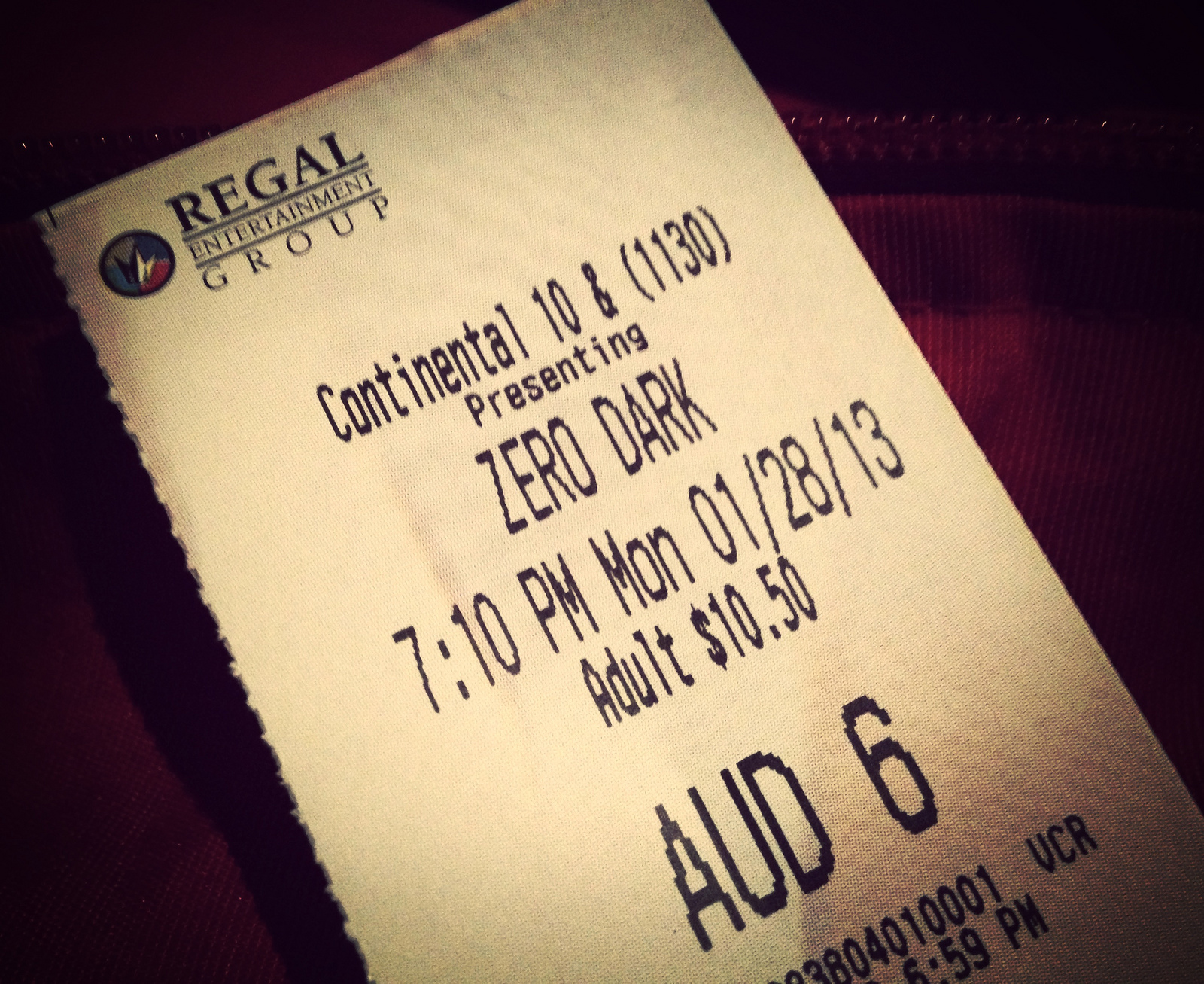The latest terrorist thriller “Zero Dark Thirty” was released today and has already received an Oscar nod for “Best Picture,” but I am not as confident about the film as the Academy appears to be. I have been debating whether or not I should buy my $10 ticket and watch “Zero Dark Thirty” in a theater. . . All that aside, my fear of watching the movie in a theater stems from my hijab. You may ask yourself, what does hijab have to do with it? To be honest: everything.
My hesitance isn’t just based on reviews that criticize the movie and its director for legitimizing torture by suggesting that such “advanced interrogation techniques” proved effective in leading to the capture of Osama Bin Laden (in fact, a close friend of mine described the torture scenes as so graphic that she had to step out). All that aside, my fear of watching the movie in a theater stems from my hijab. You may ask yourself, what does hijab have to do with it? To be honest: everything.
As a young American Muslim woman growing up in South Florida, my biggest challenge when it came to wearing the hijab was…the heat. Deciding to don this piece of cloth at the age of nine shocked everyone, including my own parents who felt I should wait until I was older, but being the stubborn person that I am, I wore it anyway. After 9/11, Americans’ growing suspicions of Muslims replaced the Florida heat as my biggest concern.
I did not allow others’ attitudes to deter me from wearing my hijab, but as someone who is very “visibly Muslim” there are times when I do feel uncomfortable, or even unsafe; sitting in a theater with other movie-goers and watching a film that centers on evil, fanatical men who call themselves Muslim is one of those moments. Let me explain. I recognize that I have nothing to do with the characters on screen and I certainly don’t bear any resemblance to the real-life terrorists who duck behind Islam as a reason for murdering innocents. However, I fear that while I can make this distinction, not every audience member will. Some will likely spot my hijab and see it as a marker of guilt by association.
Films like “Zero Dark Thirty” and television shows like “Homeland” capitalize on an already tense environment of suspicion and fear in this country. Whether or not Hollywood acknowledges it, the unfortunate reality remains that cinema which repeatedly portrays courageous Americans doggedly hunting down Muslim enemies plants distrust in viewers’ minds, leading them to wonder if their neighbors, co-workers or even the stranger with a beard or the hijab-wearing woman walking down the street might be less than an upright citizen. These story lines automatically place people who look like me into the “other” category, and this “us versus them” mind frame does more than just arouse the occasional unfriendly stare. It is what motivated a New York woman to shove a Hindu man, who she had never before seen and assumed was Muslim, into the path of an oncoming train in a crowded station, killing him instantly. “I hate Muslims,” she explained very simply.
As the Young Leaders Program Coordinator for the Muslim Public Affairs Council in Washington, D.C., I work with young American Muslims aspiring to go into government, media, business, and even the performing arts. With many young Muslims around the country eager to join Hollywood but feeling unwelcome because the industry often portrays their faith in a negative manner, we work to persuade them that they are valuable members of American society and they shouldn’t allow ignorance to curb their career goals in any way. Examples of successful individuals like actor Faran Tahir, screenwriter Sameer Gardez and Emmy Award winning director Iman Zawahry restore a sense of hope to American Muslim youth that they can break into the industry and carve out a niche for themselves without having to compromise their faith or dignity.
Photo Credit: Li Tsin Soon
Yasmin Hussein is the Young Leaders Program Coordinator at the Muslim Public Affairs Council in Washington, DC. She holds a Bachelor’s degree in Intercultural/Organizational Communication.




